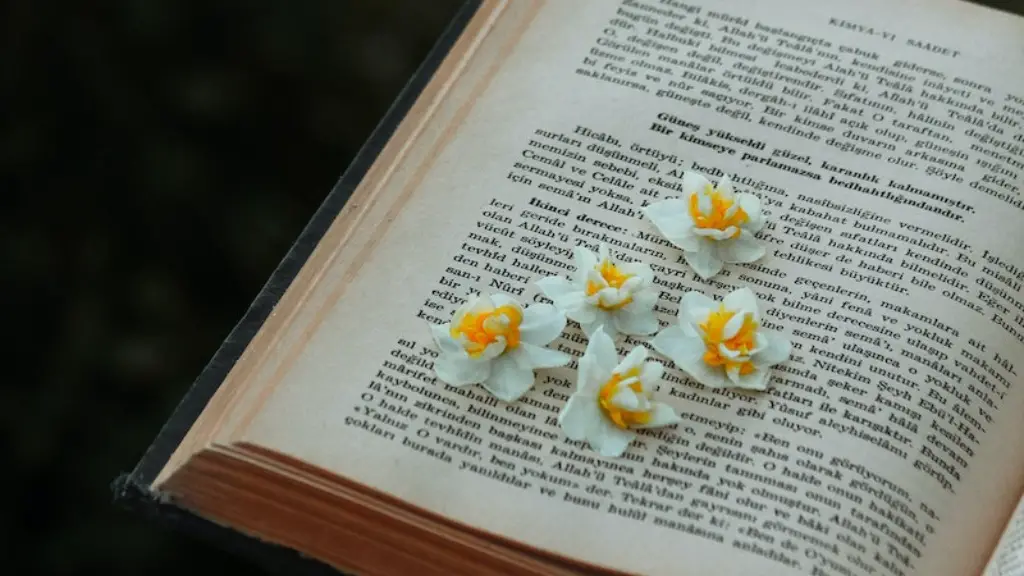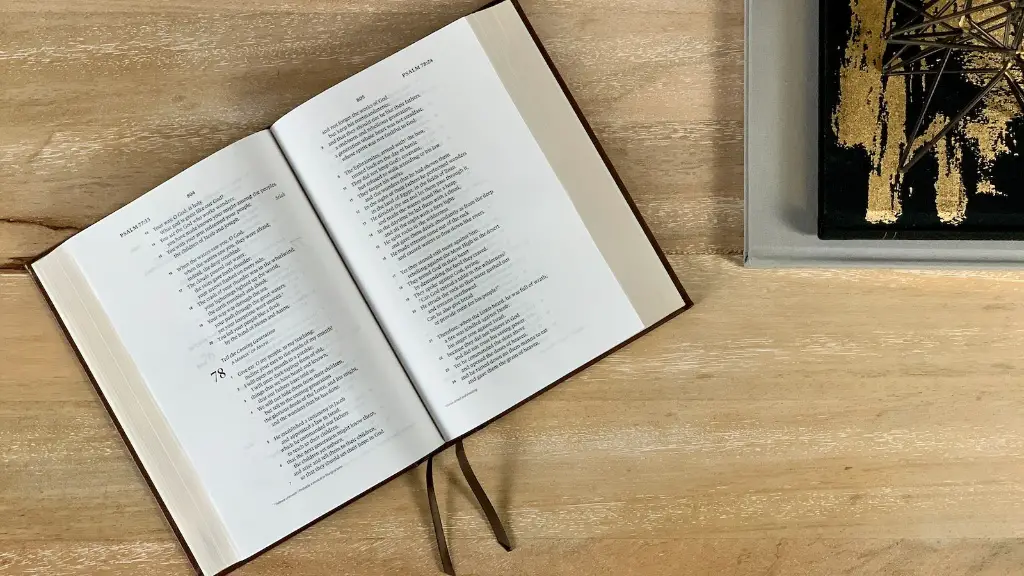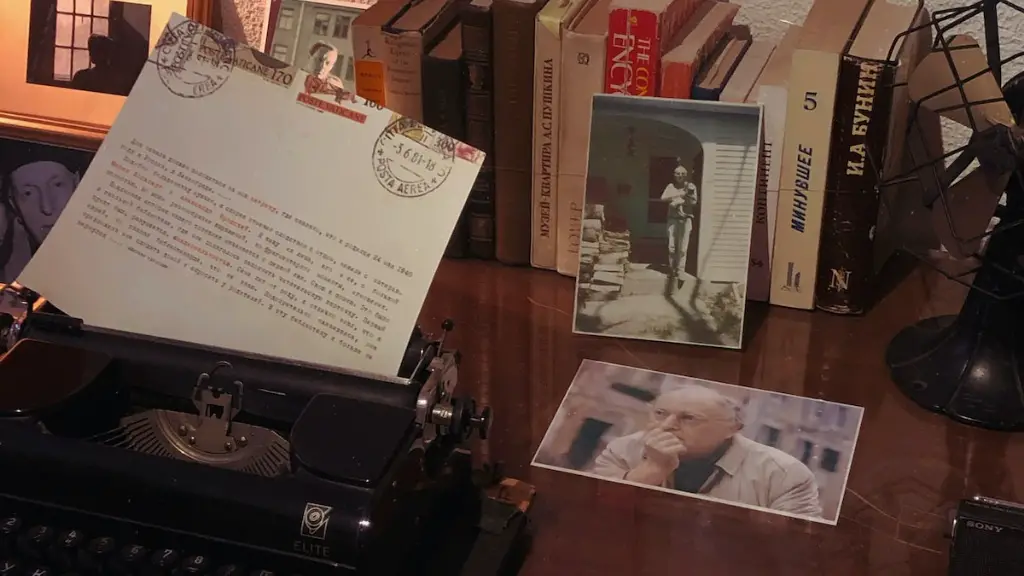What Is Enjambment in Poetry Example?
Enjambment is a poetic device where the sentence or phrase does not end at the end of a line or stanza, but instead carries over to the next line or stanza. This device has a wide range of effects, ranging from creating suspense and excitement to slowing down the poem and emphasizing a certain passage. It can also be used to add an element of surprise to poems, as the reader may not expect where the phrase or sentence will end up. An enjambment is a syntactical feature of poetic prose that signals when the syntax of a phrase or sentence continues across an adjacent line or stanza.
Enjambment can be used to create suspense and tension, as the reader is left hanging and unsure of what will happen next. Examples of this can be found in the great works of William Shakespeare, such as in Richard III, where the sentence “Now is the winter of our discontent, Made glorious summer by this sun of York” does not end until the second line. Enjambment can also be used to convey a sense of urgency or momentousness, as in Emily Dickinson’s classic poem: “Because I could not stop for Death – / He kindly stopped for me.”
In terms of the purpose of enjambment in a poem, it can serve as a way of para-rhyming two lines, in a similar fashion to rhyming two lines. It can also be used to create a contrast between two lines or two stanzas, where the phrase or sentence is interrupted and then finished in the twist of the new line. This allows a poet to emphasize a particular emotion or atmosphere, as the reader cannot tell where the phrase or sentence is headed until they reach the end.
Keats is another great poet who used enjambment to his advantage. His poem “Ode on a Grecian Urn” contains a beautiful example of enjammed lines: “Heard melodies are sweet, but those unheard/ Are sweeter; therefore, ye soft pipes, play on.” By using this technique, Keats has been able to contrast the audible melodies of the pipe with the unheard melodies.
It is also possible to use enjambment in order to create new metaphors or connotations within a poem. In his famous Shakespearian sonnet “Let me not to the marriage of true minds,” for example, the line “Nor shall death brag thou wander’st in his shade,” begins on one line and then breaks off on to the next line with the word “shade.” This creates a metaphor of death as a dark, lurking force that interrupts the loving relationship between two people.
Using enjambment in poetry can be an effective way of conveying emotion, suspense, surprise and more. It is also important to note that there are different types of enjambment, including perfect enjambment and reverse enjambment. Perfect enjambment is when a phrase or sentence carries over to the next line, while reverse enjambment is when a phrase or sentence ends before the line or stanza does.
History of Enjambment In Poetry
Enjambment as a poetic device has been used for centuries – ancient Greek lyric poetry was renowned for its use of enjambment in order to emphasize certain parts of the poem and add greater impact to the writing. The Romans, too, often employed this device in their epic poetry, as can be seen in the famed ‘Aeneid’ by Virgil. This trend has continued into modern times, and many contemporary writers still make use of enjambment.
The English language is particularly well suited to the use of enjambment, as its syntax and structure allows for creative phrasings and sentences that can be split across two lines. This has meant that many of the greatest English-language poets of all time, such as William Shakespeare, William Wordsworth, and Walt Whitman, have made use of the device.
Modern Use Of Enjambment In Poetry
Although much of the poetry written today does not make use of enjambment, many modern poets still employ this device, often using it to great effect. In the age of digital media, it can also be used to great advantage on the internet, as the ability to break up a longer phrase or sentence into two lines can create a more impactful reading experience. Several modern poets, such as Kimiko Hahn, have written entire poems exclusively in enjambment.
Enjambment can also be used to create a rhythm in a poem. By chopping up phrases and sentences between lines, a poem can create a certain flow, as the reader must pause to read both lines in order to understand the entire phrase. This can add great intensity to a poem, as the reader is constantly guessing what may come next.
Enjambment In Poetry, Language and Linguistics
Enjambment is not only a device commonly used in poetry, but also a concept studied and discussed in language studies. Students of linguistics often try to identify different types of enjambment and analyse their effects on the flow and meaning of a sentence. In this way, studying the use of enjambment in a poem can be beneficial to a student’s understanding of language and the English language in particular.
Given the importance of enjambment in poetry, it is essential that poets become familiar with its effects so that they can use it to enhance the power of their writing. Moreover, given its ubiquity in English language poetry, a student of poetry should become familiar with the techniques and effects of enjambment so as to appreciate it whenever they come across a piece of poetry that employs this device.
Enjambment In Popular Culture
Enjambment is a device that has been used in countless pieces of literature, from well-known poems to novels, plays, and songs. It is particularly common in the lyrics of rap and hip-hop music, which rely heavily on the use of figurative language, metaphors, and other poetic devices. Enjambment has also been used in the titles of some famous films, such as The Breakfast Club, which serves as an example of perfect enjambment as the title does not end until the end of the film’s title.
Enjambment can also be found in popular fairy tales and children’s literature such as the stories of the Brothers Grimm. For example, the classic Aesop’s fable of “The Fox and the Grapes” makes full use of enjambment: “The fox, seeing he could not reach them,/ tried to content himself with the follies that passed under his nose.” The enjambment of this two-line phrase emphasizes the fox’s determination, as the sentence only ends after he has attempted to get the grapes.
Enjambment And The Art of Performance
Enjambment can also be used to great effect when performing a piece of poetry. By splitting up a phrase or sentence across two lines, a performer can create suspense or surprise in the audience, thus making the performance more dynamic. By anticipating where the phrase or sentence will end and then turning it into something unexpected, the performer can take control of the poem and of the audience’s emotions.
Enjambment can also add to the rhythm of a poem, as the deliberate pause will often give the performer time to emphasize the next line or twice. This can be especially effective when coupled with the use of the pause and other techniques such as volume and tone, as the audience will be more likely to follow the narrative of the poem.
Conclusion
Enjambment is an important literary device which has been used in English language poetry for centuries. It is a powerful tool that can be used to create suspense, surprise, and a rhythm to a poem. It can also be used to convey metaphor and allegory. Understanding enjambment and its effects is essential to any student of literature or linguistic studies.




